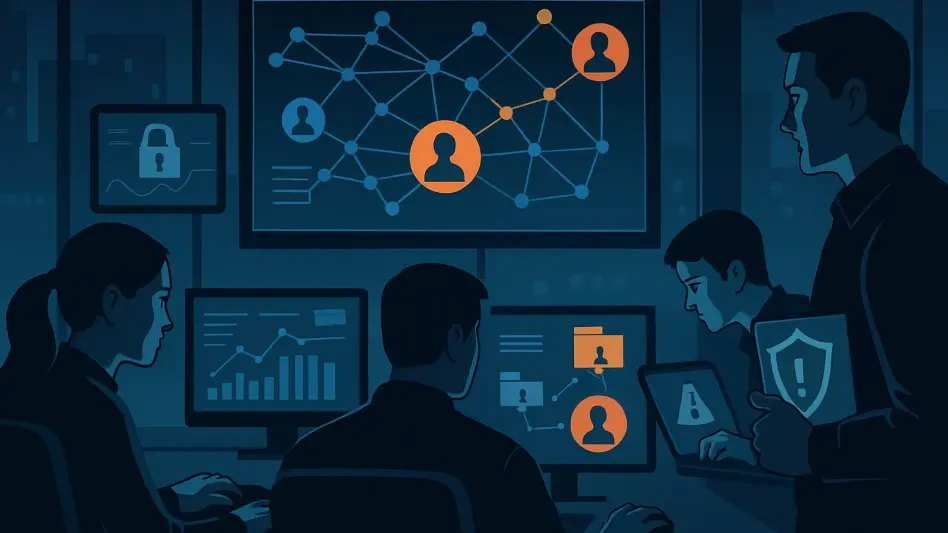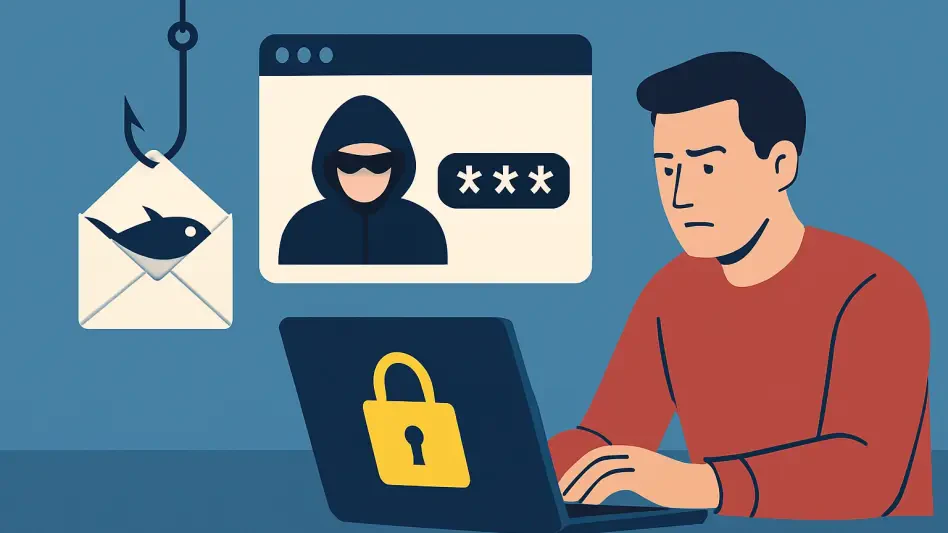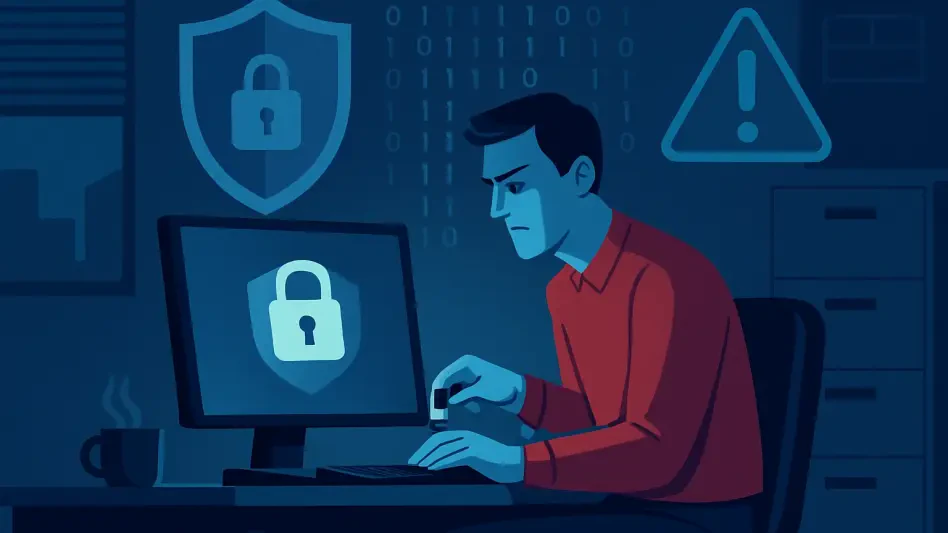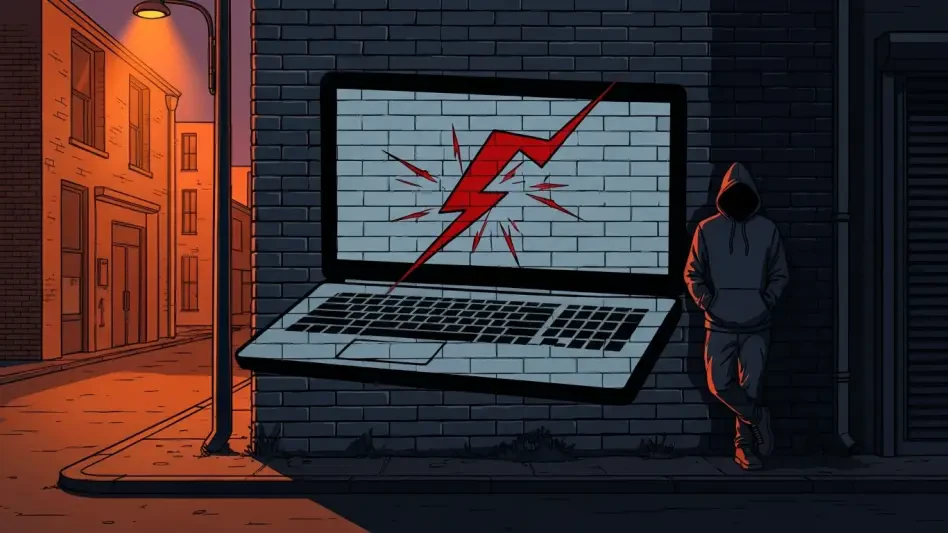In an era where trust can be a double-edged sword, insider threats remain one of the most elusive and damaging risks facing organizations today, demanding immediate attention as highlighted by National Insider Threat Awareness Month each September. The danger posed by employees, contractors, and even artificial intelligence (AI) agents with legitimate access to systems is a pressing concern that cannot be ignored in a rapidly evolving digital landscape. These internal risks, whether fueled by malicious intent, negligence, or technological gaps, are far harder to detect than external cyberattacks, often bypassing traditional defenses with ease. The evolving nature of these challenges, shaped by rapid advancements in technology and complex human behavior, places organizations in a precarious position where adaptability is no longer optional but essential. Insights from industry leaders in Identity and Access Management (IAM) and cybersecurity paint a stark picture of a landscape where the stakes are higher than ever. Their collective expertise, gathered to reflect the current state of security, reveals the urgent need for innovative strategies to combat threats from within. This exploration dives deep into the critical hurdles that must be addressed, offering a comprehensive look at how businesses can safeguard their most sensitive assets against internal vulnerabilities in a world increasingly defined by digital transformation and interconnected systems.
Unmasking the Hidden Danger of Detection
The challenge of detecting insider threats stands as a formidable barrier for organizations striving to protect their systems and data. Unlike external attacks that often leave visible traces, insiders operate within the bounds of authorized access, making their actions difficult to distinguish from legitimate behavior. This inherent trust in employees, contractors, or automated agents creates a blind spot that traditional security measures struggle to address. Experts emphasize that perimeter defenses, once relied upon to block unauthorized entry, are rendered ineffective when the threat already holds the keys to the system. The subtlety of insider actions—whether intentional sabotage or accidental misuse—means that malicious activities can go unnoticed until significant damage has been done. This detection gap is further widened by the sheer volume of daily operations within an organization, where anomalous behavior can easily blend into the noise of routine tasks, leaving security teams scrambling to identify risks before they escalate into full-blown breaches.
Compounding this issue is the lack of specialized tools tailored to pinpoint insider threats with precision. Many organizations still rely on outdated monitoring systems that are ill-equipped to analyze behavioral patterns or flag subtle deviations from the norm. Industry leaders point out that without advanced analytics capable of differentiating between benign and suspicious activities, businesses remain vulnerable to internal risks that exploit their access privileges. The challenge is not just technical but also cultural, as there’s often hesitation to scrutinize trusted individuals or entities too closely for fear of disrupting workplace harmony. This reluctance can delay the implementation of necessary oversight mechanisms, allowing potential threats to fester unchecked. Addressing this detection dilemma requires a shift toward real-time monitoring and a willingness to invest in technologies that can uncover hidden risks without compromising operational efficiency or employee trust.
Identity: The Critical Frontier in Security
In the battle against insider threats, identity has emerged as the new perimeter that organizations must fiercely defend. Static credentials, such as passwords or one-time authentication methods, are increasingly seen as outdated in an environment where access can be compromised or misused with alarming ease. Experts stress that continuous verification throughout a user’s interaction with systems is no longer a luxury but a necessity. This approach ensures that even if credentials are stolen, the risk of unauthorized actions is minimized through ongoing risk assessments. The rise of AI agents acting as internal users further complicates this landscape, as their behavior can closely mimic that of legitimate human users, blurring the lines and creating new vulnerabilities that static identity checks cannot address.
Beyond technological solutions, the governance of identity itself poses a significant challenge for many organizations. Non-privileged accounts, often overlooked in favor of high-level access points, can serve as unexpected entryways for insider threats when compromised. Industry insights reveal that robust policies around identity management—coupled with tools that monitor and adapt to user behavior—are essential to close these gaps. The focus must shift from merely granting access to ensuring that every interaction is validated against a dynamic set of risk factors. This identity-centric approach demands investment in advanced systems and a cultural acceptance that trust must be continuously earned, not assumed. Without such measures, businesses risk leaving their most critical assets exposed to internal actors who can exploit even the smallest oversight in identity security protocols.
AI and Technology: A Dual-Edged Challenge
Artificial intelligence and emerging technologies represent a paradox in the realm of insider threat prevention, acting as both a powerful tool and a significant risk factor. On one side, AI can drastically enhance the speed and stealth of insider attacks, enabling malicious actors to exploit systems with a level of sophistication that traditional defenses struggle to counter. Many organizations find themselves unprepared, lacking the behavioral analytics necessary to detect and respond to these advanced threats. The ability of AI to automate and scale malicious activities means that a single compromised insider can inflict damage at an unprecedented rate, often before security teams even realize a breach has occurred. This technological arms race places immense pressure on businesses to keep pace with tools that are as innovative as the threats they aim to mitigate.
Conversely, the same technology that empowers attackers also offers hope for stronger defenses, though harnessing it remains a challenge. AI-driven analytics can identify subtle anomalies in user behavior that might indicate an insider threat, yet the adoption of such systems is uneven across industries. Additionally, the proliferation of AI agents within organizational workflows introduces new risks, as these entities can mimic legitimate actions while potentially harboring malicious intent if misconfigured or compromised. Experts note that governing the use of such technologies requires clear policies and robust oversight to prevent them from becoming liabilities. Balancing the benefits of AI with its inherent dangers demands a strategic approach, where investment in detection capabilities is matched by efforts to secure the technology itself against internal misuse, ensuring that innovation does not come at the cost of vulnerability.
Proactive Defense: Staying Ahead of the Threat
The era of reactive security measures has passed, with experts now advocating for a proactive stance against insider threats that assumes breaches are inevitable. This mindset shift encourages organizations to prepare for the worst by implementing strategies such as immutable backups and real-time monitoring to limit damage when incidents occur. The focus on anticipation rather than reaction means that security teams must prioritize systems capable of identifying risks before they materialize into full-scale breaches. This approach requires a deep understanding of internal workflows and potential weak points, ensuring that defenses are not just robust but also agile enough to adapt to evolving threats. Proactive defense is about building resilience into the very fabric of an organization, creating layers of protection that can withstand even the most insidious internal attacks.
Another critical aspect of proactive defense lies in managing the overwhelming alert noise that often plagues security operations centers. With countless notifications flooding in daily, distinguishing genuine threats from false positives becomes a daunting task for even the most skilled teams. Industry leaders highlight the importance of refining detection strategies to focus on identity and network behavior, filtering out irrelevant signals to concentrate resources on real dangers. Automation plays a vital role here, enabling rapid responses that shrink the window of opportunity for insider abuse. However, implementing such systems requires careful calibration to avoid desensitizing teams to alerts or missing nuanced threats. By investing in technologies and processes that prioritize actionable intelligence, organizations can transform their defensive posture from one of constant firefighting to a more strategic, forward-thinking approach that keeps internal risks at bay.
Fostering a Unified Security Culture
Addressing insider threats extends far beyond the realm of technology, requiring a collaborative effort that engages every level of an organization. The alignment of departments such as IT, human resources, and compliance is essential to create a cohesive defense against internal risks. This cross-functional approach ensures that policies and practices are not siloed but integrated into the daily operations of the business. Experts emphasize that building a security-first culture starts with leadership commitment, where the importance of safeguarding data and systems is communicated as a shared responsibility. When every employee understands their role in preventing insider threats, the organization transforms into a collective line of defense, capable of identifying and mitigating risks that might otherwise slip through the cracks.
Education and awareness form the bedrock of this cultural shift, tackling issues like shadow AI usage and poor cyber hygiene that often stem from a lack of understanding. Regular training programs can equip staff with the knowledge to recognize suspicious activities and report them promptly, turning potential vulnerabilities into strengths. Industry insights suggest that fostering an environment where security is seen as everyone’s job—rather than just the purview of specialized teams—can significantly reduce the likelihood of insider incidents driven by negligence. This collaborative ethos also encourages open dialogue about emerging risks, ensuring that policies evolve in step with new challenges. By prioritizing cultural transformation alongside technical solutions, organizations can create a sustainable framework for insider threat prevention that leverages the power of human vigilance as much as it does advanced tools.
Streamlining Security Amid Growing Complexity
As insider threats become more sophisticated, the complexity of managing security operations presents a formidable challenge for many organizations. Security teams often grapple with an inundation of alerts, making it difficult to separate critical threats from benign notifications. This deluge of information can lead to fatigue and oversight, allowing genuine risks to go unaddressed until it’s too late. Experts highlight a growing trend toward streamlining processes through automation and prioritization, which aims to reduce the burden on human operators while maintaining a high level of vigilance. By focusing on the most relevant signals—often tied to identity and network anomalies—organizations can allocate their resources more effectively, ensuring that attention is directed where it matters most without being overwhelmed by irrelevant data.
The push for efficiency in security operations also involves shrinking the window of opportunity for insider abuse through rapid, automated responses. When suspicious activity is detected, systems must be capable of initiating immediate countermeasures, such as locking accounts or restricting access, to prevent escalation. However, achieving this level of responsiveness requires careful integration of technology with existing workflows to avoid disrupting legitimate operations. Industry leaders caution that while automation is a powerful tool, it must be paired with human oversight to address nuanced threats that algorithms might miss. This balance between speed and accuracy is crucial for managing the growing complexity of insider risks. By refining their operational strategies to focus on actionable intelligence and swift action, organizations can better navigate the intricate landscape of internal security, ensuring that complexity does not become a liability in their efforts to stay secure.
Reflecting on Solutions for a Safer Tomorrow
Looking back on the discussions surrounding National Insider Threat Awareness Month, it became evident that insider risks had evolved into a multifaceted challenge requiring equally dynamic solutions. The insights shared by industry experts underscored a critical shift toward proactive, identity-centric defenses that had been meticulously crafted to address the hidden nature of internal threats. Efforts to integrate AI and advanced analytics had proven instrumental in detecting subtle anomalies, while cultural initiatives had successfully transformed workforces into vigilant defenders against negligence and misuse. The emphasis on collaboration across departments had fostered a unified approach, ensuring that security was no longer seen as a siloed responsibility but a collective mission.
Moving forward, organizations should prioritize the adoption of continuous monitoring and resilience planning to stay ahead of evolving risks. Investing in technologies that streamline alert management and automate responses will be key to reducing operational burdens and enhancing effectiveness. Additionally, ongoing employee education must remain a cornerstone of defense strategies, empowering individuals to act as the first line of protection. As the landscape of insider threats continues to shift, businesses are encouraged to regularly reassess their policies and tools, ensuring they remain adaptable to new challenges. By embracing these actionable steps, companies can build a robust framework that not only mitigates current dangers but also prepares them for the uncertainties of tomorrow’s security environment.








